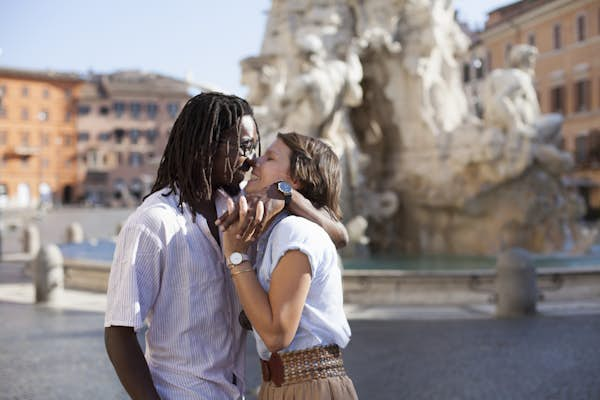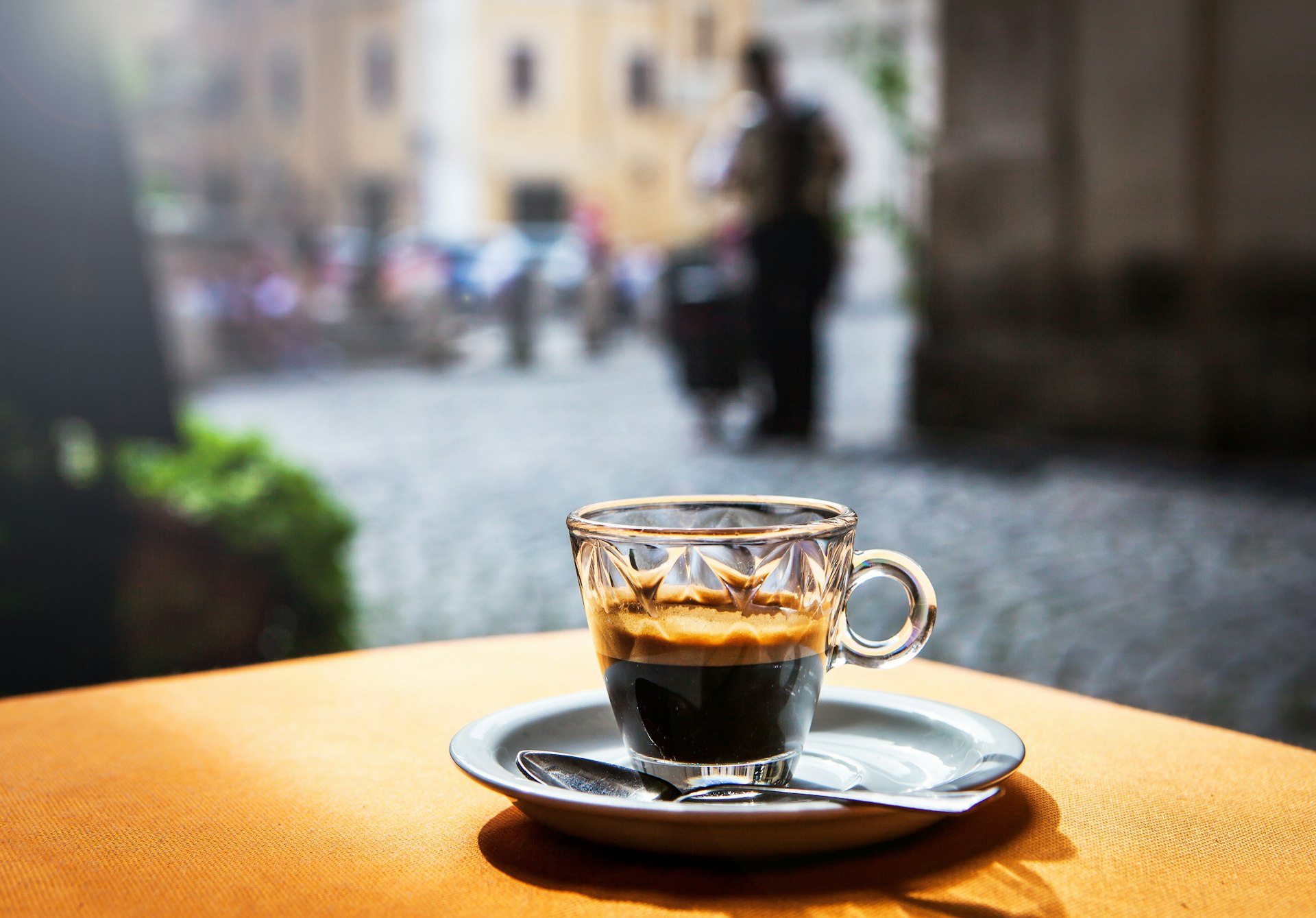
Like any major European capital, Rome can be eye-wateringly expensive, but there’s no need for the Eternal City to leave you eternally broke.
The city offers myriad ways to visit in style while saving money. Outside of summer, you should be able to find cheap flights, or better yet, take advantage of Italy’s cheap and comprehensive railways. Picking neighborhoods away from the touristy core can yield savings and also expose you to a more interesting mix of residents, shops and street life.
Rome’s public transportation is cheap and can take you any place you need to go. Getting around on foot is not only free but also the very best way to experience the city – you can’t go wrong with strolling and people-watching. And when you need sustenance, eating and drinking like a local means your savings will be as big as your enjoyment.
Finally, there’s no entrance fee required for some of Rome’s best attractions – all across town, you’ll find churches, gorgeous gardens, world-class monuments and ancient sites that are admission-free. Here are our top tips for stretching your budget in Italy’s capital city.
1. Shop around for flights
Rome is served by every airline of any size in Europe as well as international carriers from further afield. That competition can yield big savings and plenty of seats if you buy well in advance. Even last-minute travelers in Europe may find bargain airfares to Rome.
Almost all airlines use Leonardo da Vinci Airport, which is well-linked to the city by frequent trains and buses. Rome’s other airport is Ciampino, which is used by budget carrier Ryanair. It has less-frequent bus links to the city but often cheaper airfares.
Flying to Rome from outside Europe offers no airfare surprises: winter fares are the lowest, summer the highest. And there’s little hope of a bargain if it’s already May and you’re considering a summer trip.
Get local insight on destinations all over the world with our weekly newsletter delivered to your inbox.
2. Take the train
Italy’s railways are extensive, offering some of the cheapest fares in Europe, and the trains on the major lines are fast – you can get from Milan to Rome in just over three hours. Ticket prices are so low that there’s no need for train passes for Italian travel. Not even an Interrail pass will save you anything.
Shop online and know that on longer routes served by fast trains, the same rules apply as those for airfares – buy early for the cheapest seats. Reservations open 12 weeks ahead of departure. If you already live in Europe, it can be worth researching which sleeper trains head to Rome as these can save you a night’s accommodation as you arrive fresh in the city. Vienna, Salzburg and Villach in Austria, and Munich, Germany, are among the current night train options.
 To avoid the visiting hordes, see Rome during the shoulder seasons instead of the summer months © Getty Images / iStockphoto
To avoid the visiting hordes, see Rome during the shoulder seasons instead of the summer months © Getty Images / iStockphoto
3. Travel in the off-season
Rome’s residents may take some or all of August off and flee the city, but they are simply replaced by hordes of visitors coming in for a Roman holiday. In other words, August – like the rest of the summer months – is not cheap.
But given that Rome is a major metropolis, it’s already a year-round city, and there are few essential activities dependent on summer weather. In fact, only during particularly cold spells is it too chilly to sit outside at a cafe watching life amble past. And conversely, not trying to see the sights in the crowded, muggy heat of summer can be a delight.
That said, eating, drinking and admission prices are the same year-round. The biggest seasonal savings you’ll enjoy are on tourist-oriented accommodation and on travel tickets to the city. As elsewhere, many favor the shoulder seasons of March to May and September to October for good weather and reduced crowds compared to the summer’s peak.
4. Reserve a place to stay early
The best budget hotels and Airbnb rentals book out early, so it pays to reserve as soon as possible. Every extra effort you make to shop around will give you a better chance of securing a really great place to stay, which, depending on your tastes, can mean an elevator building, a rooftop patio with views or a prime location close to your interests.
 Away from the Centro Storico, Trastevere is a neighborhood worth checking out ©Catarina Belova/Shutterstock
Away from the Centro Storico, Trastevere is a neighborhood worth checking out ©Catarina Belova/Shutterstock
5. Stay out of the Centro Storico
Rome’s lovely – and touristy – heart, the Centro Storico, with the Pantheon, Piazza Navona and more, is awash in accommodations, though much of it isn’t especially inspiring due to the hordes constantly checking in. Adjoining neighborhoods can offer up savings and a more interesting place to stay; plus, they have a higher percentage of full-time residents, so daily life has more character.
Trastevere, Giancolo, Tridente, Ludovisi, Aventino, Testaccio and Borgo are among the neighborhoods worth checking. Rome’s walkability and good public transit mean that none of these areas will put you too far from the core sights. Note, however, that despite a plethora of affordable options, no one ever said, “Gosh, I’m glad I stayed near Termini!” The streets around Rome’s main train station are chaotic and charmless.
6. Walk everywhere
Walking around the city combines practicality with one of life’s great pleasures – exploring Rome on foot. Around every twist in the cobblestone streets is another ancient monument, ages-old church, beguiling cafe, flower-scented courtyard or other surprise.
7. Or ride public transport
Rome’s metro, trams and buses get a bad rap for cleanliness and petty crime, but in reality, the system is popular, convenient and cheap. A single ride only costs €1.50 ($1.70), and unlimited ride passes come in several flavors, including one-day (€7/$8) and three-day (€18/$20).
8. Eat on the streets
Rome has some of the world’s best street food. Those delicious-looking slices of pizza being sold for cheap from a little literal hole in the wall are delicious. Delis and food shops have all manner of ready-to-eat snacks, and street markets are lined with vendors selling luscious fruits and vegetables as well as cheeses, sandwich meats, bakery items and alluring prepared foods.
At night, wander the neighborhoods away from the Centro Storico, where moderately priced trattorias abound. If you see a line-up of residents waiting for tables at a restaurant, don’t think twice. Join the queue, and you’ll likely be rewarded with a memorable – and affordable – meal.
 If all you want is a quick espresso, it’ll cost less if you order and drink standing at the bar © Ekaterina Smirnova / Getty Images
If all you want is a quick espresso, it’ll cost less if you order and drink standing at the bar © Ekaterina Smirnova / Getty Images
9. Know that the table is yours
If you buy a drink or a coffee at a Roman café, you may sit as long as you like, reading, people-watching, writing postcards (or posting your latest pics to Instagram) and just generally setting up shop to enjoy Roman life.
On the other hand, if all you want is a quick espresso, know that it’ll cost less if you order and drink standing at the bar than when you take a seat. (Consider the surplus for sitting your rent!)
10. Have a meal with your drink
For the cost of a drink (about €10/$11.30) in a bar, you might also enjoy a fabulous meal for no additional charge. Many cafes and bars serve apertivo, a buffet of house-made snacks that can include some rather elaborate dishes. Since the idea is to get you drinking and then keep you drinking, portions are unlimited, and the quality is often superb.
11. Go to church
Rome has hundreds of churches. Many are famous in their own right and attract travelers who revel in their history and devotion to a particular saint or religious order. Most have a priceless fresco or painting or five. All are free, and almost all have some combination of architectural merit, noteworthy heritage, famous artworks and masterpieces and other features like serene cloisters.
With its trio of Caravaggio paintings, Chiesa di San Luigi dei Francesi is but one example among many. It’s always worth ducking into any church that catches your eye as you explore the city. And sometimes, the greatest reward can come within a seemingly nondescript facade.
12. Buy a Roma Pass
If you’re seeing several attractions, Rome’s tourist pass can be a good option. It offers a combination of free admission to one or two major sights and significant discounts on others, as well as unlimited public transit rides for the duration. A 48-hour pass costs €32 ($36); a 72-hour version costs €52 ($59).
 Piazza Navona is a great place for people-watching – a signature Roman experience © Stefan Cioata / Getty Images
Piazza Navona is a great place for people-watching – a signature Roman experience © Stefan Cioata / Getty Images
13. Enjoy Rome’s favorite pastime
Hanging out and people-watching on the piazzas is a signature Roman experience. Top spots include Piazza Navona, Campo de’ Fiori, Piazza del Popolo and public squares across Trastevere.
14. Get monumental
The Pantheon, Trevi Fountain and Piazza Navona are among dozens of world-class monuments that can be savored for free. In fact, given its 2000-year-old history and extraordinary significance, the Pantheon is one of the world’s most sensational free sights.
Archeological sites that would be municipal treasures elsewhere are almost lost among Rome’s highlights. As you walk the city, keep your eyes open for little digs here and there, marked by the odd column or two poking above street level.
15. Watch out for free days
Even popular and expensive museums like those at the Vatican have free days. You can gaze up at the ceiling of the Sistine Chapel for free on the last Sunday of every month, and on the first Sunday of the month, you can see the Colosseum, Roman Forum and Palatino gratis. One caveat of the free days is that you’ll be joined by oodles of fellow budget-minded travelers.
In high season, look for popular museums offering nighttime hours when crowds – and at times, prices – are greatly reduced.
Daily Costs
- Hostel room: €15–45 ($17–51)
- Basic room for two: €60–130 ($68–147)
- Self-catering apartment: €100–300 or more ($113–340)
- Public transport ticket: €1.50 ($1.70)
- Coffee in a cafe: €2-4 ($2.25–4.50)
- Pizza slice: €2–5 ($2.25–5.70)
- Dinner for two: €45–150 or more ($51–170)
- Glass of wine at the bar: €5–10 ($5.70–11.30)



